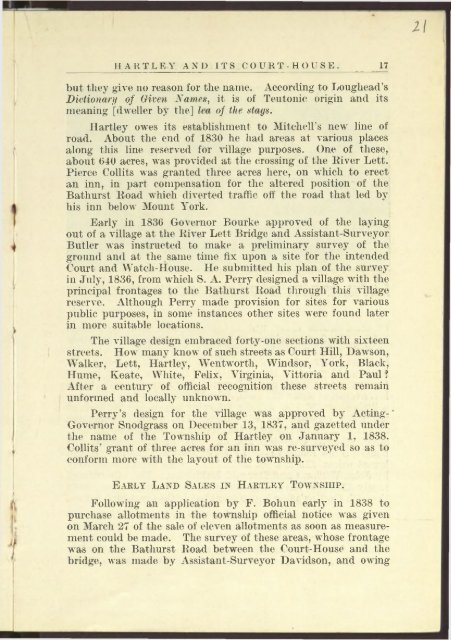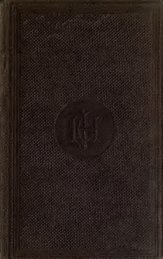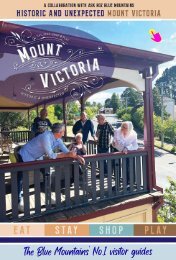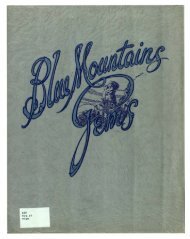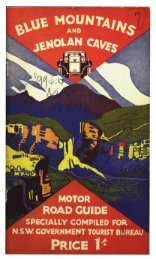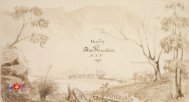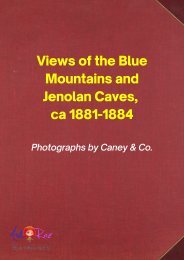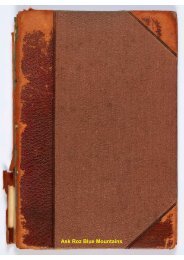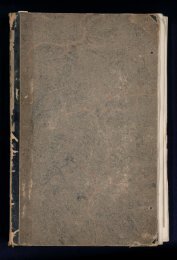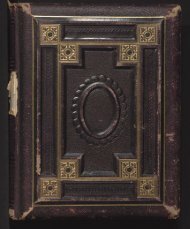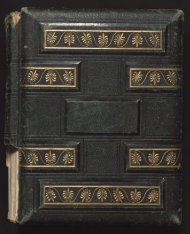Hartley Court House - 1837 to 1937
Hartley Court House - 1837 to 1937
Hartley Court House - 1837 to 1937
Create successful ePaper yourself
Turn your PDF publications into a flip-book with our unique Google optimized e-Paper software.
16 HARTLEY AND ITS COURT-HOUSE.<br />
of the division. The damage had been repaired but he considered<br />
it would be no stronger than the original wall. As a result of<br />
investigation the Colonial Architect received a report from<br />
Edward P. Delany, the Clerk of Works, who stated that it was<br />
not s<strong>to</strong>ne work which had fallen, but plaster, about fourteen<br />
inches square, which had broken bond owing <strong>to</strong> the mason<br />
cutting off a header that projected beyond the bond timber in<br />
the lock-up. Delany also stated in this report, dated September<br />
16, that the building “ will be completed this week, as the cedar<br />
<strong>to</strong> fit up Privy and some fastnings have come up from Sydney,<br />
which caused the delay of completion.” On Oc<strong>to</strong>ber 3, <strong>1837</strong>,<br />
according <strong>to</strong> Blair’s letter of that date, <strong>to</strong> the Colonial Secretary,<br />
the contrac<strong>to</strong>r for erecting the new <strong>Court</strong>-<strong>House</strong> had that day<br />
given him notice that the building was completed. Blair<br />
however declined <strong>to</strong> receive the key until he had received<br />
official instructions. Towards the end of December he was<br />
anticipating moving the Police establishment in<strong>to</strong> the new<br />
<strong>Court</strong>-<strong>House</strong> within a few days. Following the Report of the<br />
Board of Survey the <strong>Court</strong>-<strong>House</strong> was officially declared <strong>to</strong> be<br />
satisfac<strong>to</strong>rily completed and payment of Coulter and Reddie’s<br />
account was sanctioned.<br />
The change of site caused some inconvenience and extra<br />
expense <strong>to</strong> the contrac<strong>to</strong>rs. In making out their costs before<br />
tendering they had calculated the cost of transporting the s<strong>to</strong>ne<br />
<strong>to</strong> the site by the River Lett. The final decision regarding the<br />
site was not made until September, 1836, and then it was<br />
discovered that this entailed carting the s<strong>to</strong>ne forty-seven chains<br />
beyond the site first intimated. This suggests that the quarry<br />
was situated near Bowenfels ; the <strong>Court</strong> <strong>House</strong> is sands<strong>to</strong>ne<br />
but the local rock is granite. The quarry from which s<strong>to</strong>ne was<br />
evidently brought across the River Lett must have been somewhere<br />
in the sands<strong>to</strong>ne tableland, and at no great distance, for<br />
it was the practice of the Police Magistrate, Day, <strong>to</strong> ride quietly<br />
b y it. Had the s<strong>to</strong>ne been brought from the direction of Mount<br />
Y ork it would neither have been taken across the River Lett<br />
nor beyond the site first proposed. After completing the<br />
building the contrac<strong>to</strong>rs applied for compensation and were<br />
allowed £50 in addition <strong>to</strong> the contract price of £1,426.<br />
G e n e s i s o f t h e T o w n of H a r t l e y .<br />
Official records indicate that the name <strong>Hartley</strong> came from<br />
the office of the Colonial Secretary or the Executive Council


